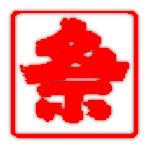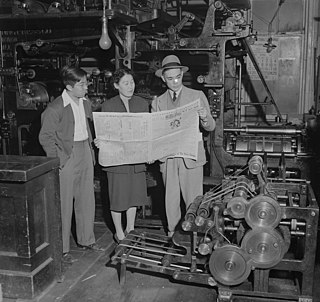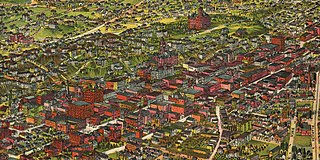 W
WThere is a Japanese American and a Japanese national population in Los Angeles and Greater Los Angeles. Japanese people began arriving in the United States in the late 1800s and have settled in places like Hawaii, Alaska, and California. Los Angeles has become a hub for people of Japanese descent for generations in areas like Little Tokyo and Boyle Heights. As of 2017, Los Angeles has a Japanese and Japanese American population of around 110,000 people.
 W
WCrenshaw, or the Crenshaw District, is a neighborhood in South Los Angeles, California.
 W
WCurry House was a Japanese-style curry restaurant based in California. It was founded and formerly operated by House Foods. The chain was closed down permanently on February 24, 2020.
 W
WThe Japanese American National Museum is located in Los Angeles, California, and dedicated to preserving the history and culture of Japanese Americans. Founded in 1992, it is located in the Little Tokyo area near downtown. The museum is an affiliate within the Smithsonian Affiliations program.
 W
WLos Angeles Tofu Festival, usually known as Tofu Festival or Tofu Fest, was a weekend matsuri held every August in Little Tokyo, Los Angeles from 1995 to 2007. Due to ongoing redevelopment in Little Tokyo there is no longer enough space to hold a festival of the size of Tofu Fest, and it has been canceled indefinitely, the last festival being held in 2007.
 W
WMarukai Corporation U.S.A. is an American offshoot chain of retail markets that imports and sells Japanese goods in American cities started by the Osaka, Japan-based Marukai Corporation (Japan). Unlike other Japanese supermarkets, which may carry non-Japanese products based on local diversity, Marukai has Hawaiian products as a core focus in addition to Japanese in all its stores. Its headquarters are in Gardena, California, in Greater Los Angeles.
 W
WThe National Japanese American Veterans Memorial Court is a national memorial court in Los Angeles, California, honoring the bravery and sacrifice of Japanese American veterans during World War II, the Korean War, and the Vietnam War. It is maintained by and located adjacent to the Japanese American Cultural & Community Center on San Pedro Street, in Little Tokyo.
 W
WNisei Week is an annual festival celebrating Japanese American (JA) culture and history in Little Tokyo, Los Angeles. Nisei means 2nd generation in Japanese, describing the first American born Japanese, a group which the seven-day festival was originally meant to attract. Though named for the Nisei generation, Nisei Week is no longer targeted at Niseis, nor is the festival still contained within a week. Nisei Week Foundation president for 2006, Michelle Suzuki, described the festival as "the opportunity for people of all backgrounds to celebrate Japanese heritage and culture".
 W
WThe Pavilion for Japanese Art is a part of the Los Angeles County Museum of Art containing the museum's collection of Japanese works that date from approximately 3000 BC through the 20th century AD. The building itself was designed by renowned architect Bruce Goff.
 W
WThe Rafu Shimpo is a Japanese-English language newspaper based in Little Tokyo, Los Angeles, California.
 W
WSawtelle Boulevard is a north/south street in the Westside region of the city of Los Angeles, California. For most of its length, it parallels the San Diego Freeway, one block to the east.
 W
WThe Shifting Grounds of Race: Black and Japanese Americans in the Making of Multiethnic Los Angeles is a nonfiction book by Scott Kurashige, published in 2008 by Princeton University Press. It discusses interactions between African Americans and Japanese Americans in the Los Angeles area from the 1920s through the 1990s. Kurashige argued that the distinct civil rights' movements of both the African-Americans and the Japanese Americans in Los Angeles were affected by the "shifting grounds of race"; aspects of their movements overlapped but they used distinct methods and strategies. On many occasions members of the two ethnic groups lived in proximity to one another. Japanese people focused on business as they were unable to participate in politics, since they were not U.S. citizens. African-Americans, who were U.S. citizens, were able to participate in politics while having less footing in the business world. The focus on black-Japanese relations is distinct from the usual tendency of race-related nonfiction works to focus on white-black relations. Kurashige emphasized the presence of "triangular relations" among blacks, Japanese, and the politically dominant white political center.
 W
WThe late-Victorian-era Downtown of Los Angeles grew year by year, around 1880 centered at the southern end of the Los Angeles Plaza area, and over the next two decades, extending south and west along Main Street, Spring Street, and Broadway towards Third Street. Most of the 19th-century buildings no longer exist, surviving only in the Plaza area or south of Second Street. The rest were demolished to make way for the Civic Center district with City Hall, numerous courthouses, and other municipal, county, state and federal buildings, and Times Mirror Square. This article covers that area, between the Plaza, 3rd St., Los Angeles St., and Broadway, during the period 1880 through the period of demolition (1920s–1950s).
 W
WThe Yamashiro Historic District is located on Sycamore Avenue in the Hollywood Hills, Los Angeles, California, United States.
 W
WThe Zen Center of Los Angeles (ZCLA), temple name Buddha Essence Temple, is a Zen center founded by Hakuyu Taizan Maezumi in 1967 that practices in the White Plum lineage.